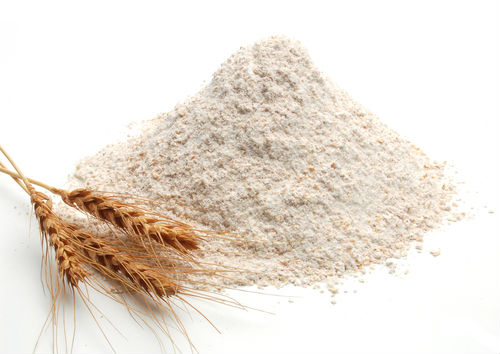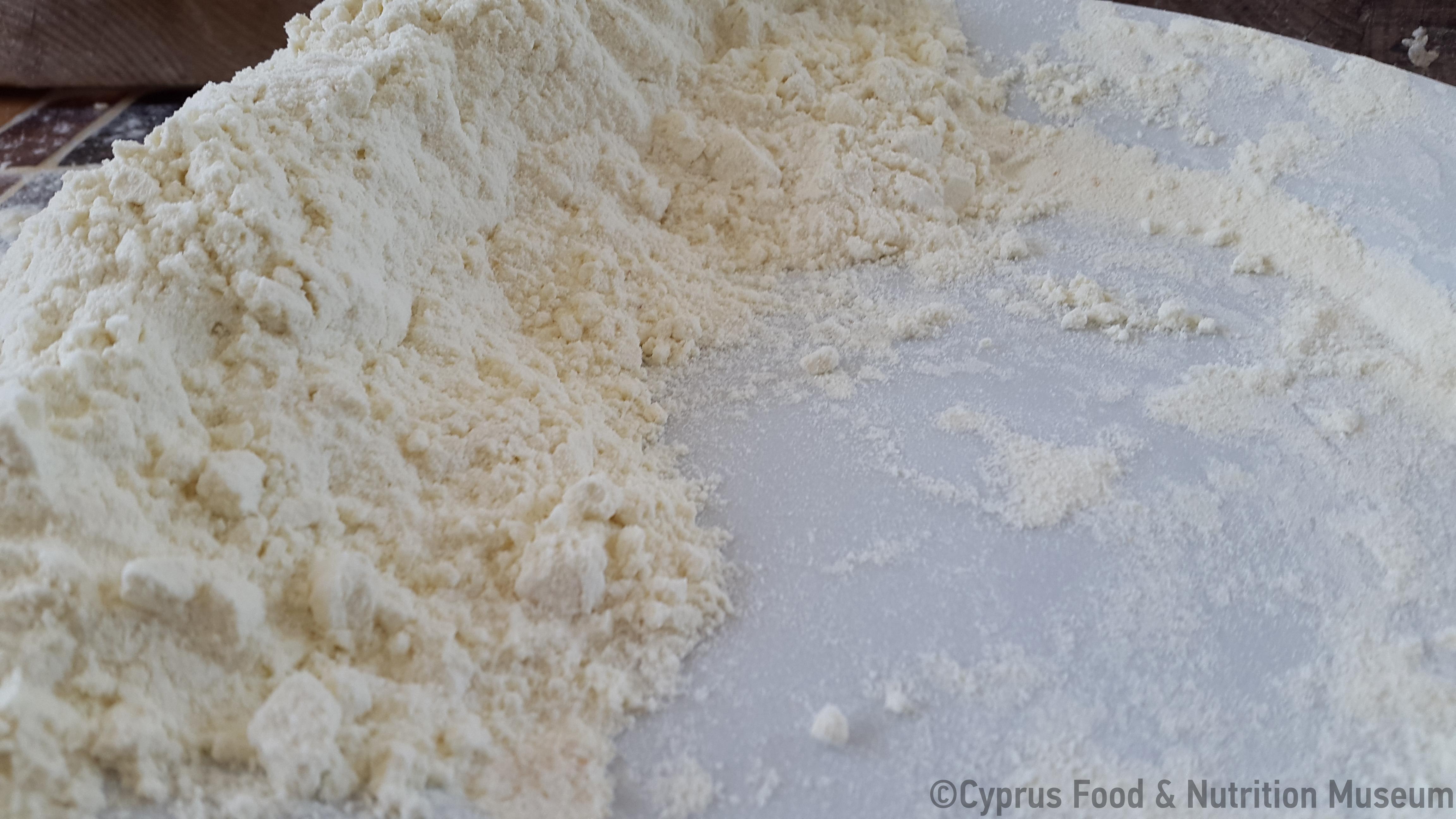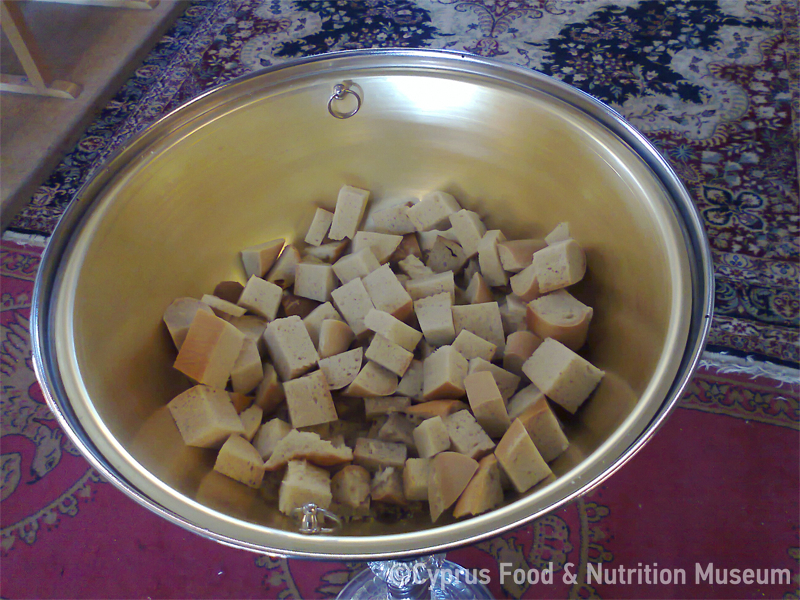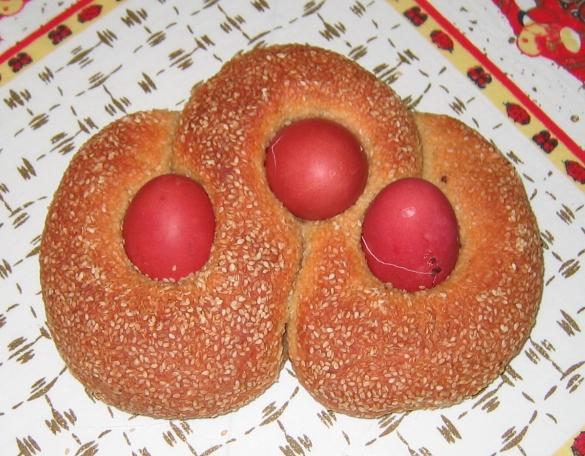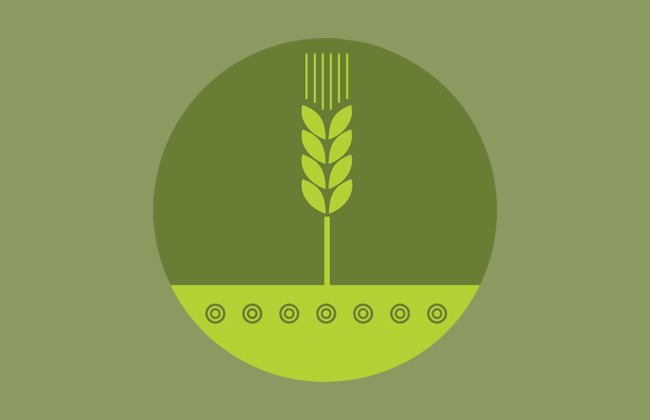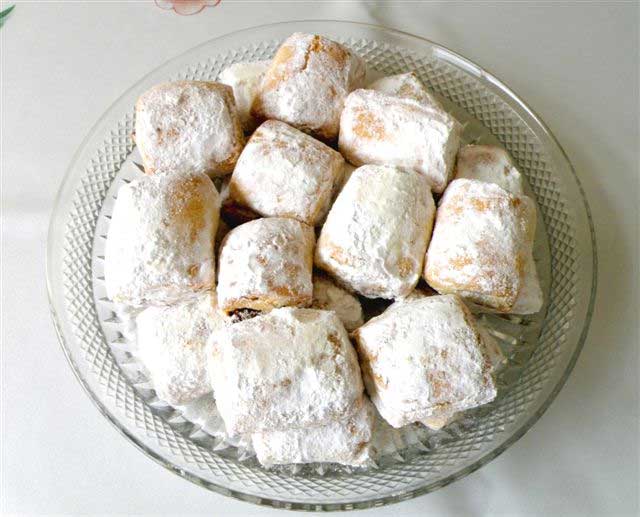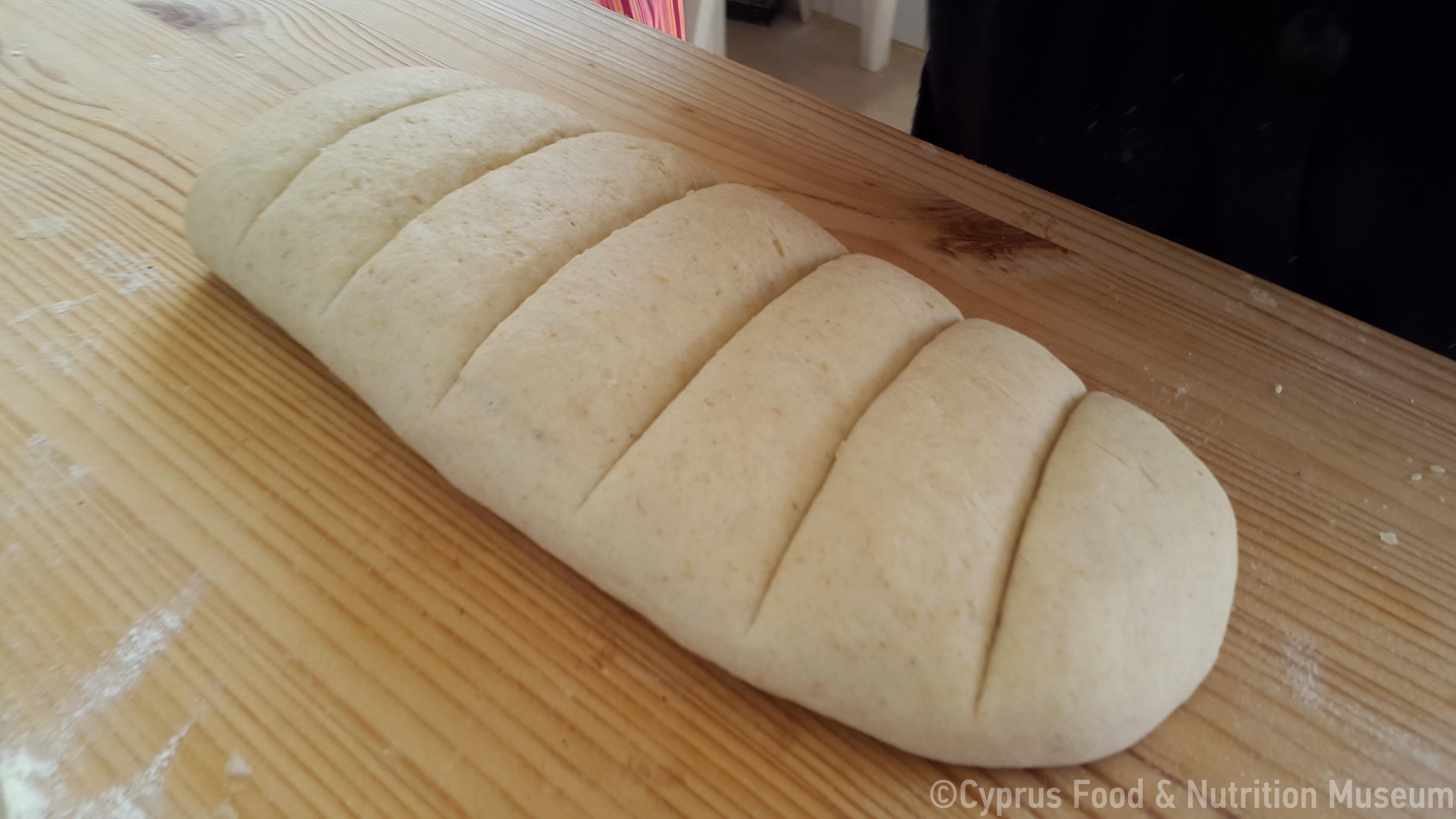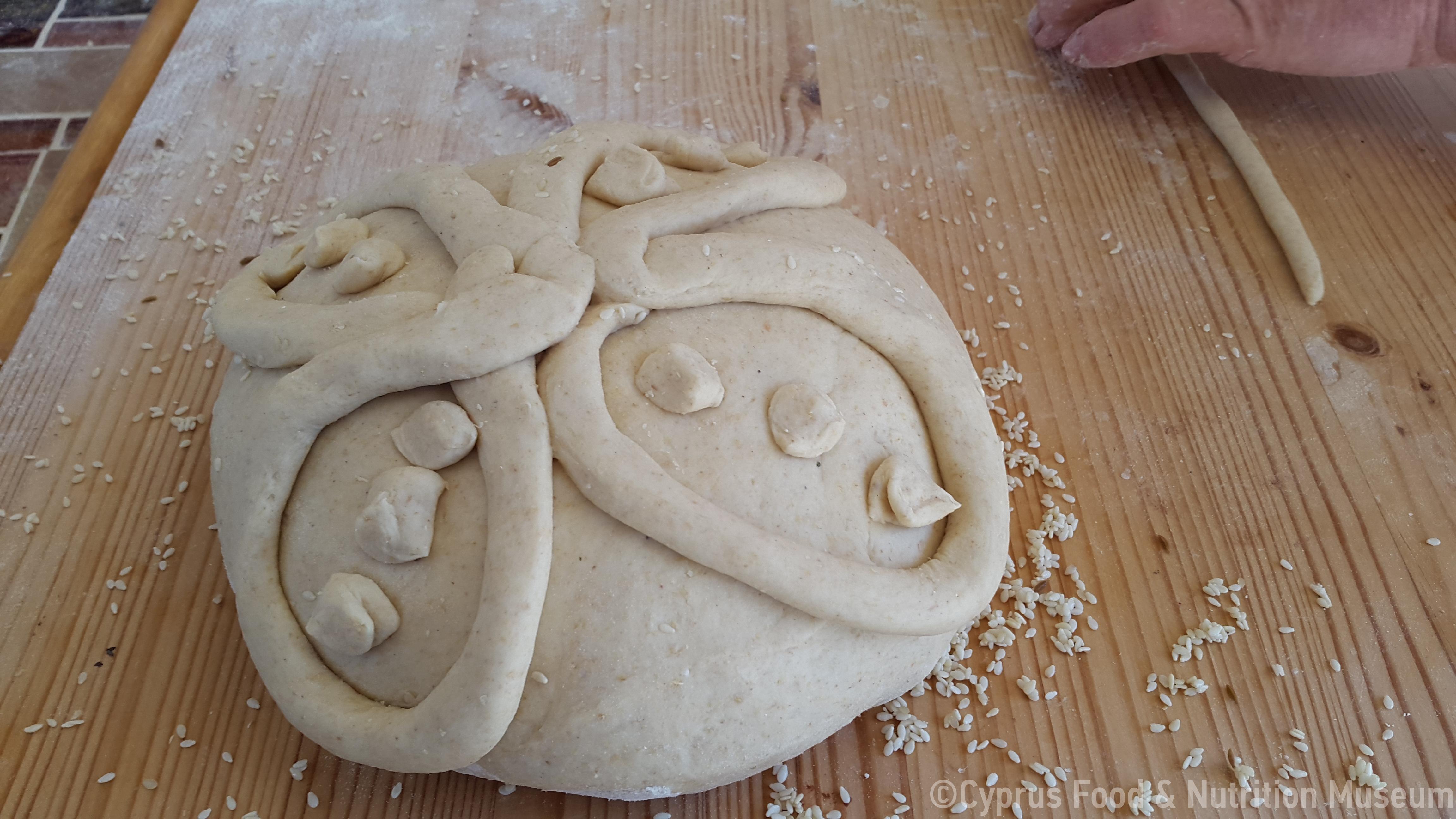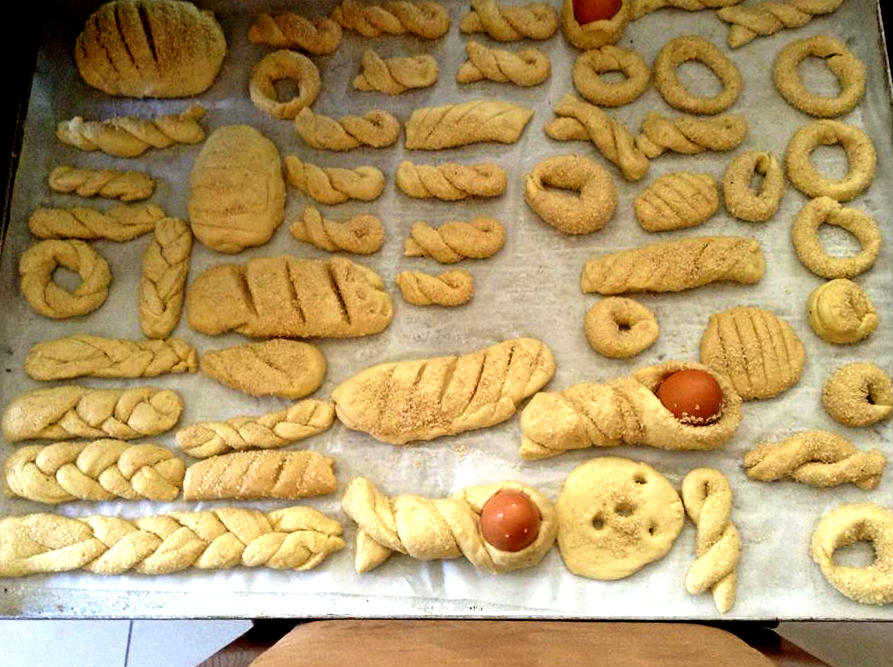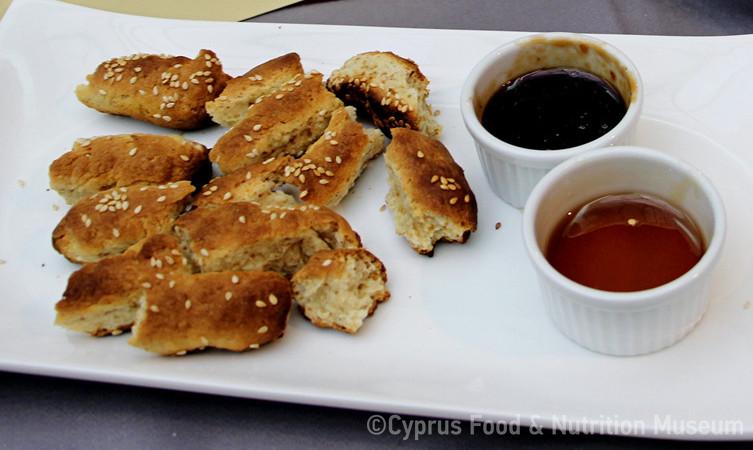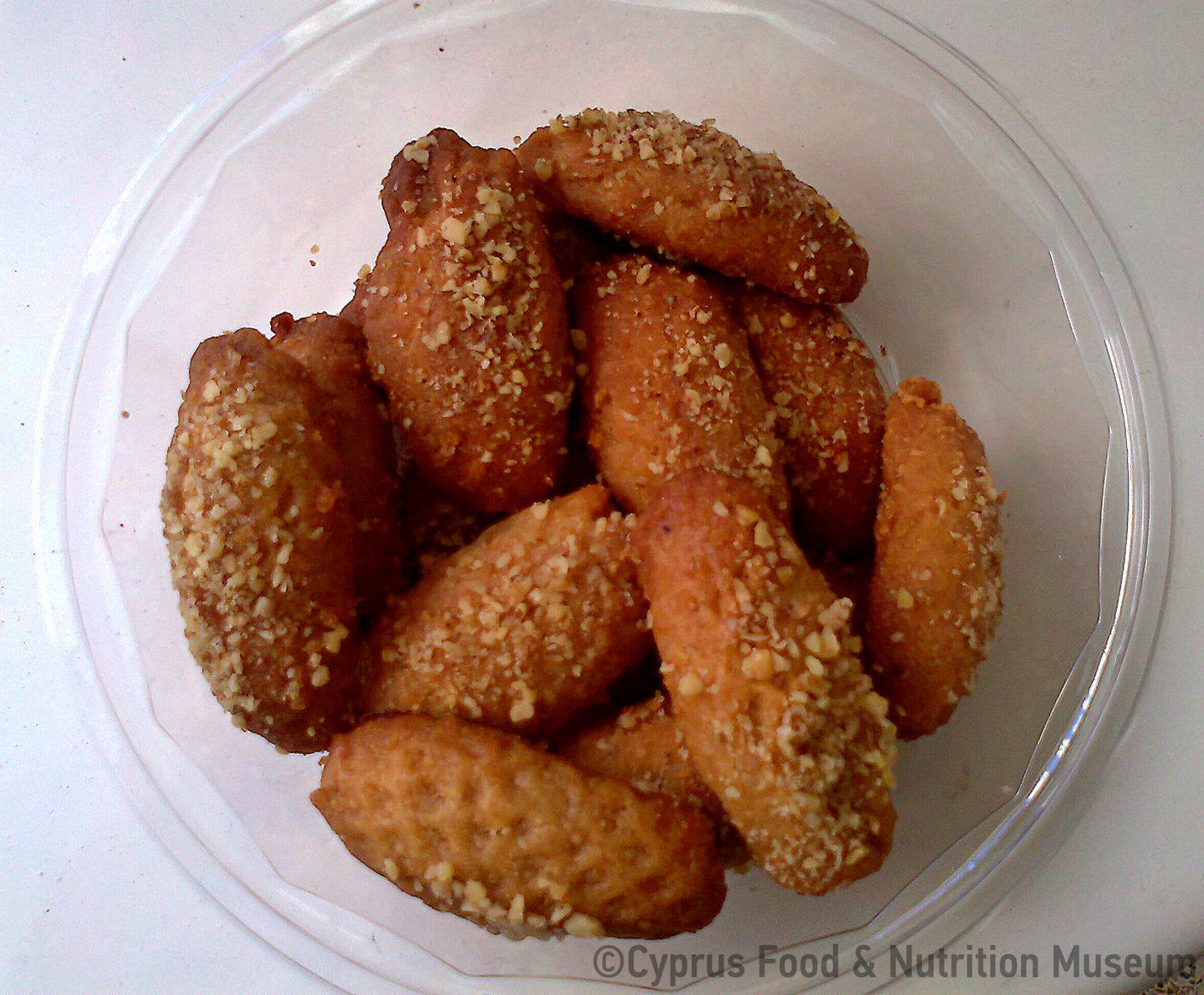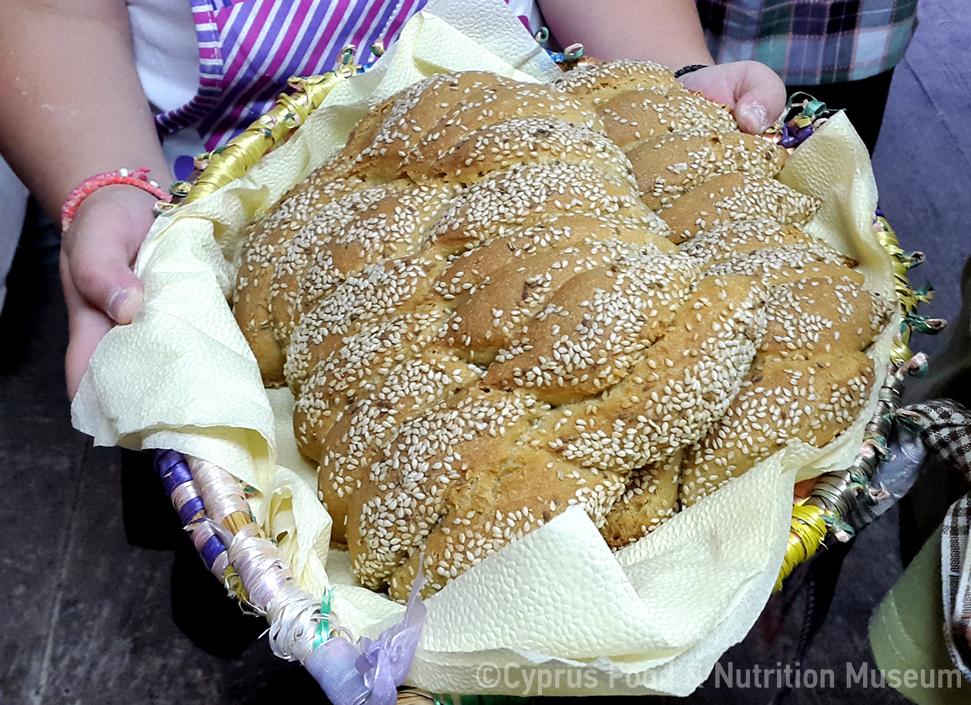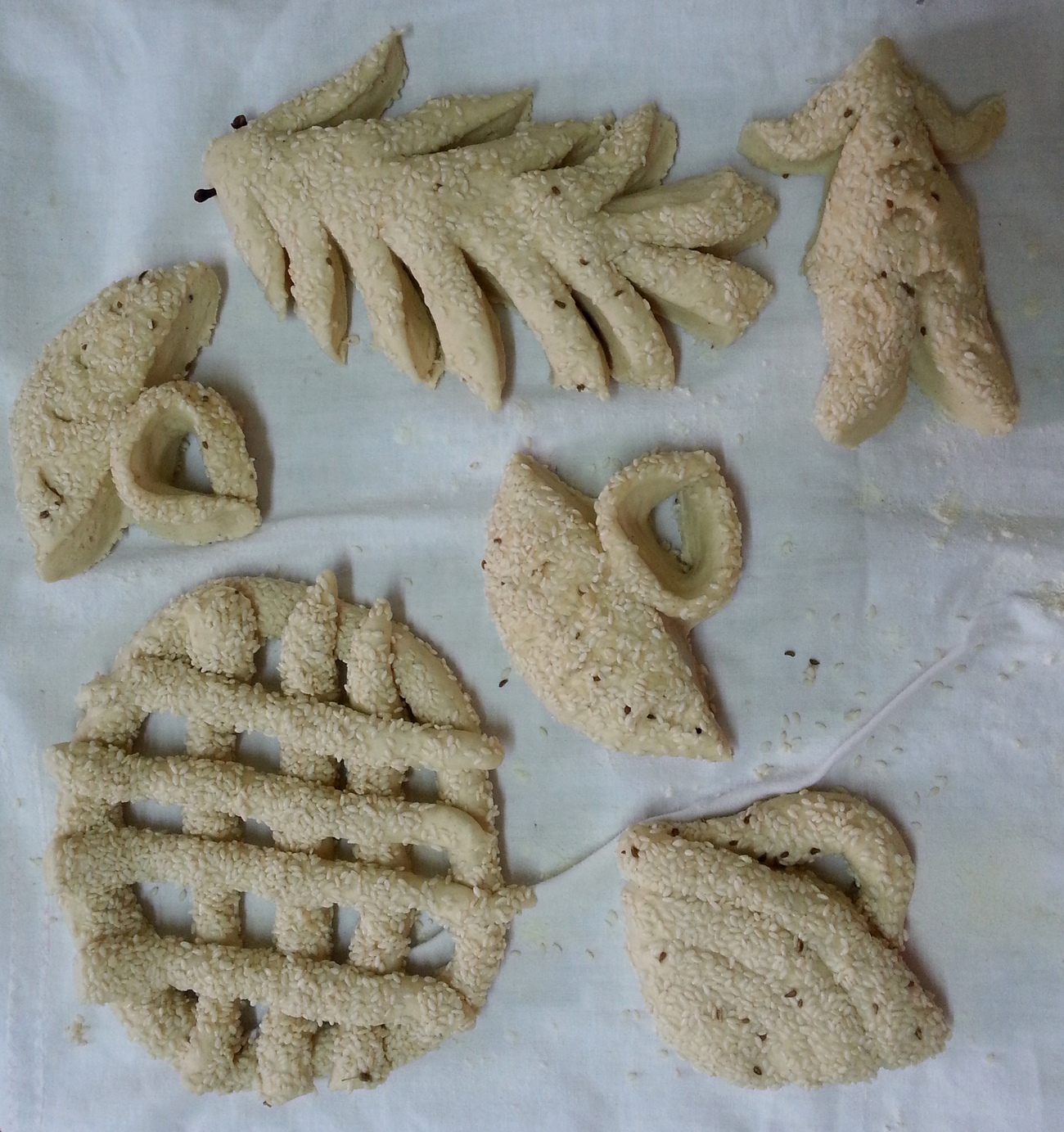Traditional Christmas baking includes “hristópsomo”, “gennópita” and “koulloúri” in various shapes and with different names
Name - Origin
Traditional Christmas baking includes “hristópsomo”, “gennópita” and “koulloúri” in various shapes and with different names. Stavrokoúlloura (cross-shaped buns) would be hung on the walls of the houses in various villages on the island during the festive season and were both part of the festive decoration as well as a means of protection. In various parts of the island, Christmas rusks were called 'koúmoulla'. In addition, soft buns called “dahtylies” were also baked. “Glystarkés” (s. glystarká) are rusks made of thin strips of dough placed in a circle, crossed in the centre and sprinkled with sesame seeds. Finally, some other types of buns made in various shapes, depending on the imagination of each housewife, were “vortakoúthkia” (meaning little frogs), which were an expression of the desire/wish for rain (and very important for farmers), “athropoúthkia” (meaning little people - Greek tradition associates them with the souls of the dead) and “zembiloúthkia” (meaning little baskets) which were an expression of the desire/wish for the harvest to be blessed.
(source: www.sigmalive.com/simerini/news/social/105287)
Functional and symbolic role
Prepared and consumed during the Christmas season.
Additional information and bibliography
Mavroudi Eleni (2008) http://www.sigmalive.com/simerini/news/ social/105287, 25/12/2008
Stalo Lazarou
